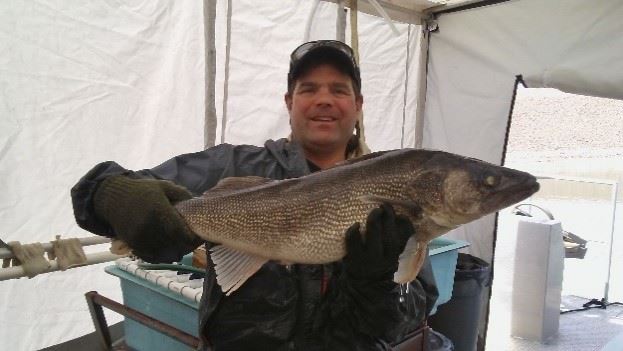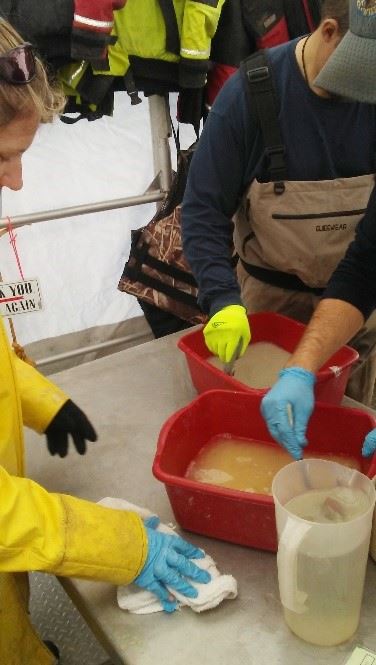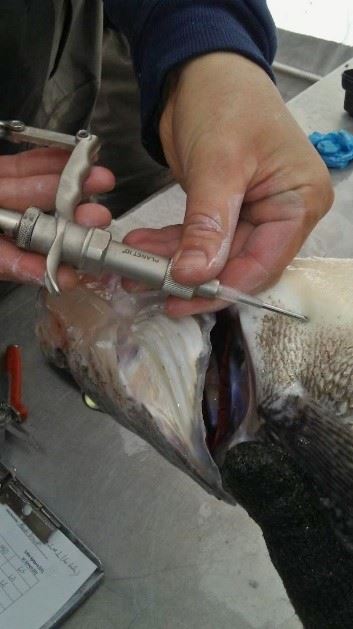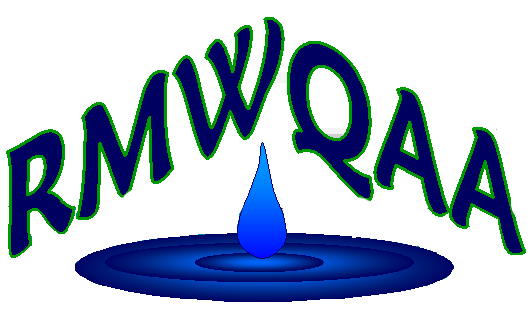Spring is in the air and it’s time to spawn! Each year, Colorado Parks and Wildlife (CPW)  employees aid in the spawning process for millions of fish at reservoirs across the state. These reservoirs are used for sport fishing and recreation and are home to brown trout, kokanee, cutthroat trout, and walleye. Human intervention in the spawning process help to manage and maintain populations. Local walleye spawning happens at Cherry Creek Reservoir, Chatfield Reservoir, and Pueblo Reservoir.
employees aid in the spawning process for millions of fish at reservoirs across the state. These reservoirs are used for sport fishing and recreation and are home to brown trout, kokanee, cutthroat trout, and walleye. Human intervention in the spawning process help to manage and maintain populations. Local walleye spawning happens at Cherry Creek Reservoir, Chatfield Reservoir, and Pueblo Reservoir.
A few Metro Wastewater employees were able to volunteer to help with CPW’s efforts in March. Here’s how things went:
 I spent a nice sunny day at Cherry Creek with five CPW employees who work all over the state but come to Denver for the “Walleye Spawn” each year. First, we rode out on a pontoon boat and collected 11 gill nets that were set the previous day. These very long nets (6ft x ~400 meters each) have relatively big holes which are designed to selectively collect larger fish. Large fish like gizzard shad and white suckers get stuck in the nets. We found them, handpicked them out and threw them back. Things are different when a walleye is reeled in. The walleye is carefully removed from the net and placed in the boat’s holding tank.
I spent a nice sunny day at Cherry Creek with five CPW employees who work all over the state but come to Denver for the “Walleye Spawn” each year. First, we rode out on a pontoon boat and collected 11 gill nets that were set the previous day. These very long nets (6ft x ~400 meters each) have relatively big holes which are designed to selectively collect larger fish. Large fish like gizzard shad and white suckers get stuck in the nets. We found them, handpicked them out and threw them back. Things are different when a walleye is reeled in. The walleye is carefully removed from the net and placed in the boat’s holding tank.
After a few hours of net pulling, we transported the walleye back to holding tanks on a floating barge where the spawning process happens. The fish are separated into male/female batches. Next, the females are segregated into “ripe” and “not ripe” batches according to how ready they are to release their eggs.
The ripe females are assisted by a firm, but careful, smooth squeezing process on their bellies (similar to a deep tissue massage) to release as many eggs as possible into a tub. A similar process happens with the males to combine their sperm or “milt” with the eggs. A clay-mud solution is prepared and added to the mixture to help prevent clumping and allow for efficient fertilization. Each tub is carefully hand-stirred for 90 seconds with a goose feather to avoid damaging the eggs.
The spawning process is time sensitive. If left too long, the eggs harden and clump together quickly; preventing fertilization. To add to the time crunch, a released egg only accepts sperm for a limited time. After fully mixed, the fertilized eggs are carefully rinsed to remove the mud and placed in a holding tank for a one-hour incubation period. After incubation, the fertilized eggs are transported, in this case, to the CPW fish hatchery in Wray, CO. In the wild, the fertilized eggs normally land on rocks and incubate, but some reservoirs have more sand and silt furthering hindering success.
The spent walleye are then put in large holding tanks in the belly of the boat with flowing  lake water until they can be individually measured, weighed, and scanned for fish PIT (passive integrated transponder) tags. Fish that need tags are injected with a tiny PIT tag, similar to the microchips put in your cat or dog, and released back into the reservoir. These tags allow for tracking and data collection each year.
lake water until they can be individually measured, weighed, and scanned for fish PIT (passive integrated transponder) tags. Fish that need tags are injected with a tiny PIT tag, similar to the microchips put in your cat or dog, and released back into the reservoir. These tags allow for tracking and data collection each year.
Spawning lasts around 3-4 weeks with an average of 35 spawns per day. The statewide goal is to collect over 130 million eggs to spawn for re-populating the state’s lakes. Spawning methods vary depending on species, location and conditions. CPW operates 19 fish hatcheries around the state. If you are interested in volunteering for Walleye Spawn or another event, go to http://cpw.state.co.us/ and sign up as a volunteer.
Michelle Neilson, Water Quality Technician, has been with Metro Wastewater for 8.5 years. She has a B.S. in Chemistry, and has 19 years of experience in the Environmental field. Michelle has worked for USGS, contract laboratories, and several municipal wastewater and drinking water labs prior to Metro Wastewater.
 Welcome to the
RMWQAA Website!
Welcome to the
RMWQAA Website!  Welcome to the
RMWQAA Website!
Welcome to the
RMWQAA Website!